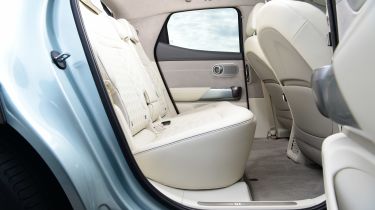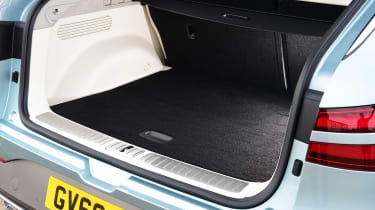Genesis GV60 review - Practicality & boot space
"The Genesis GV60 could be more practical, but the interior is pleasant"
The Genesis GV60 was designed from the outset as an electric car, so the designers never had to work around fitting an engine up front. This means there’s more storage, including a front 'frunk' compartment that’s good for keeping charging cables in, and the interior is surprisingly spacious. It’s not the roomiest EV of its type, though.
Genesis GV60 interior space & storage
The dedicated electric car design means that the wheels are pushed right out to the corners of the car, and this creates added interior space over a similarly-sized petrol car. There’s lots of space in the rear seats of the GV60 as a result, with enough legroom and headroom for most.
Be aware that models with a panoramic sunroof (an optional extra) have significantly less headroom and so aren’t ideal for people planning to carry tall passengers in the back.
There’s lots of space in the front, and the open design means that it feels very airy and spacious. The centre console is useful as an armrest as well as for storage (with two cup-holders) and there’s a spot for your phone while it charges. There are lots of USB ports for everyone to use to charge their mobile devices.
You can add a Comfort seat package for the front and rear on the options list. This adds heated and cooled seats and ambient lighting in the front and retractable blinds, tinted windows and heating for the rear seats.
Boot space
Boot space in the GV60 isn’t a strong point, but it’s still practical enough for most families. There are 432 litres of rear boot space in all models, which expands to 1,550 litres with the seats folded down.
That’s smaller than that of a Hyundai Ioniq 5 and even the Kia EV6 has 490 litres of space. The Volkswagen ID.4 also has a roomier boot. Still, you don’t have to store the charging cables for the car in the back, because there are 53 litres of storage space under the bonnet – at least in the entry-level version.
In higher-spec models, which have four-wheel drive and therefore an electric motor at the front, this space shrinks to just 20 litres. It’s rather small and not very useful in these versions.










